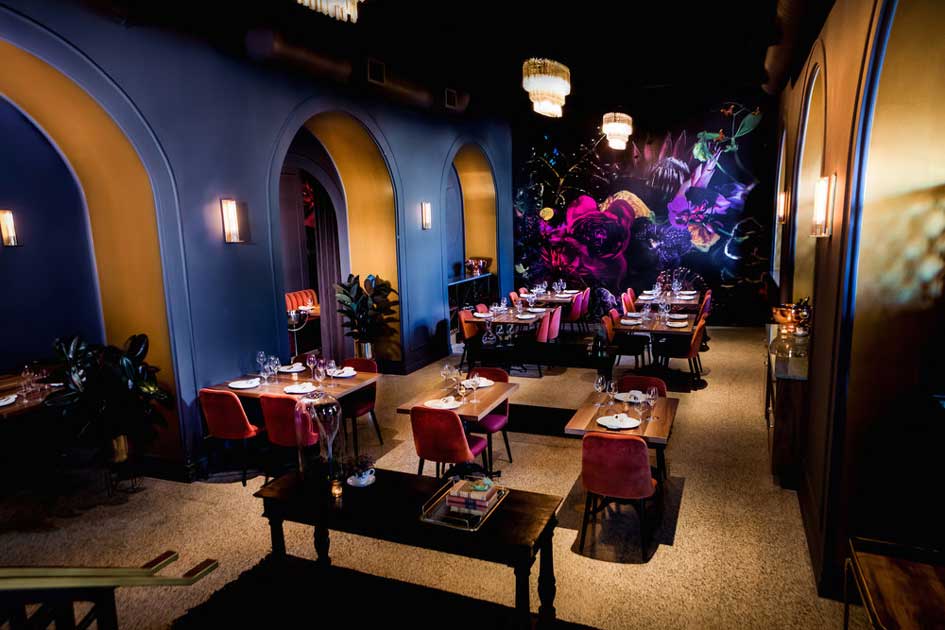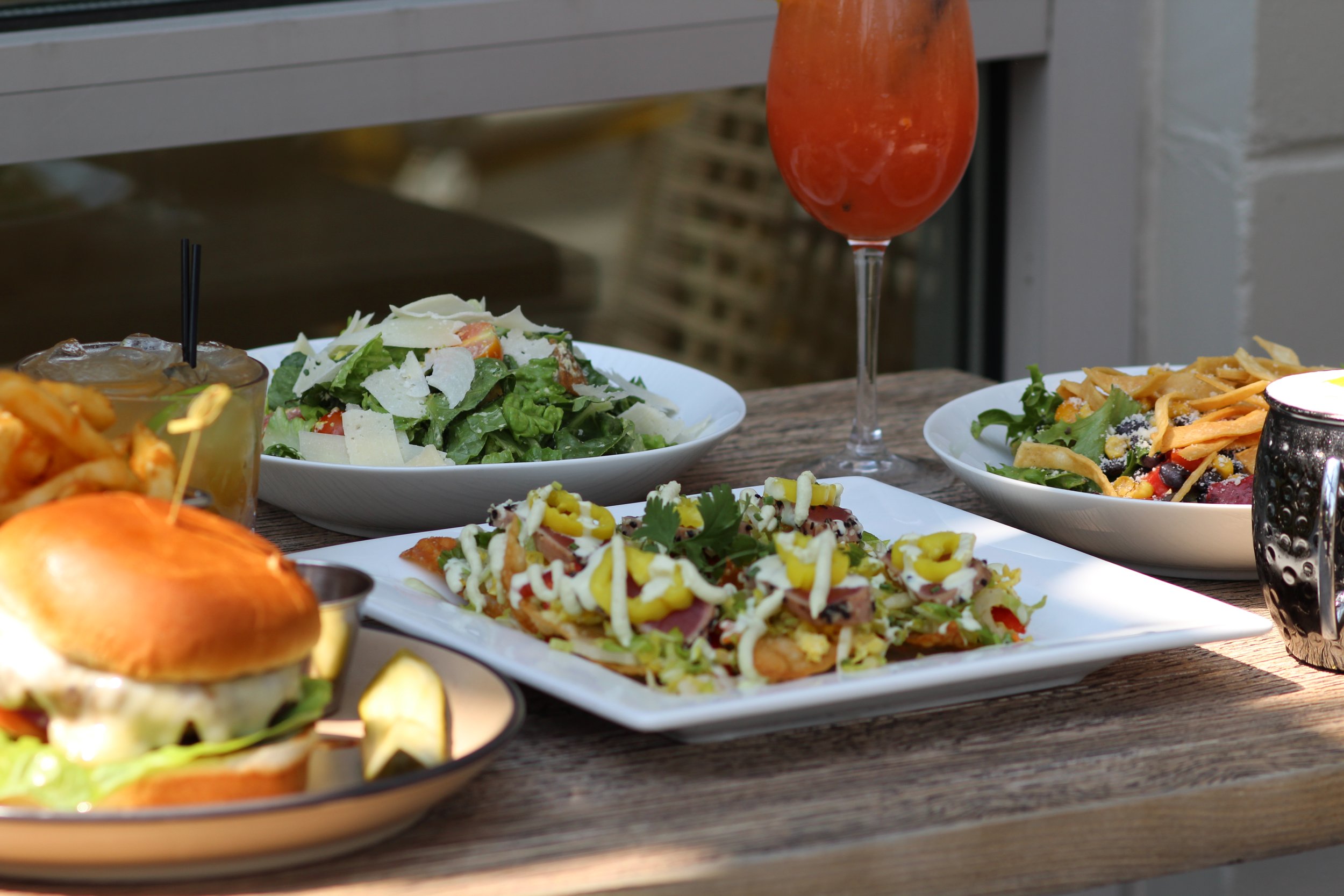Savor Authentic Asian Food With a Pan-Asian Spin for a Culinary Adventure
Embarking on a cooking trip via genuine Asian cuisine, improved with a Pan-Asian twist, offers a distinct opportunity to discover the rich tapestry of tastes that define the area's varied cooking customs. As you ponder these attracting dishes, consider the social narratives and historical impacts that form them, each bite providing a story waiting to be uncovered. pan asian restaurant Islamabad.

Exploring Pan-Asian Tastes
In the realm of global gastronomy, Pan-Asian food attracts attention for its exceptional diversity and the unified interplay of flavors from numerous Oriental cultures. This cooking technique celebrates the rich practices and unique active ingredients discovered across the continent, creating a tapestry of tastes that is both rewarding and fascinating. Secret to Pan-Asian food is its ability to stabilize different flavors-- pleasant, salted, spicy, and sour-- while highlighting the freshness and top quality of each component.
From the umami-rich soy sauce of Japan to the intense chili peppers of Thailand, Pan-Asian food offers a considerable combination of flavors. These components are often integrated in creative methods, boosting dishes with layers of intricacy. As an example, the use of aromatic herbs such as lemongrass and cilantro, typical in Vietnamese and Thai food, includes a revitalizing brightness to dishes, while the consolidation of coconut milk provides a velvety, abundant appearance.
The focus on fresh fruit and vegetables and fragrant flavors makes sure that each meal is not just a banquet for the taste yet additionally for the detects. Pan-Asian food welcomes diners to begin on a cooking journey, checking out the huge and differed landscapes of Oriental gastronomy with every bite.
Combination Meals to Attempt
While Pan-Asian food is commemorated for its standard flavors, the modern-day cooking landscape is increasingly embracing combination meals that blend these traditional components with impacts from various other areas. This innovative strategy not just honors the rich heritage of Oriental cookeries yet also presents novel preference experiences that appeal to modern tastes buds.
An archetype of such a fusion dish is the Korean-Mexican taco, where seasoned bulgogi beef is covered in a warm tortilla, topped with kimchi and a spicy gochujang-infused salsa. This mix weds the bold, savory flavors of Korea with the dynamic, fresh elements of Mexican food. Similarly, sushi burritos have obtained popularity, integrating the fragile artistry of Japanese sushi with the hearty, hand-held comfort of a burrito, typically including fusion components like tempura shrimp and avocado with a drizzle of wasabi mayo.
Another notable meal is Thai curry ramen, which instills the creamy, aromatic seasonings of Thai curry into the calming broth of traditional Japanese ramen, developing a harmonious blend that tantalizes the senses. These blend recipes prolong past plain novelty; they represent a culinary discussion in between societies, urging expedition and development in the globe of Pan-Asian food.
Essential Ingredients and Flavors
To absolutely value Pan-Asian cuisine, one must understand the essential active ingredients and flavors that develop its foundation. This diverse cooking design attracts from an abundant tapestry of Oriental traditions, employing an unified mix of tastes and structures.
Fragrant components are critical, with lemongrass, ginger, and garlic being ubiquitous across various Pan-Asian dishes. These active ingredients give an aromatic base that enhances the intricacy of tastes. Flavors such as celebrity anise, cardamom, and cinnamon present warmth and character, resembling impacts from regions like China and India.

Food Preparation Techniques and Tips
Grasping the art of Pan-Asian food requires experience with its distinct food preparation methods, each adding to the dynamic tapestry of tastes this culinary tradition is celebrated for. Central to these approaches is the stir-fry, a rapid cooking strategy that protects the dietary integrity and brilliant shades of active ingredients. Using a wok, the stir-fry technique permits also warmth distribution, vital for achieving the particular texture and taste balance of Pan-Asian recipes.
Another fundamental technique is steaming, particularly prevalent in Chinese cuisine. This mild approach keeps the all-natural flavors and nutrients of components, making it suitable for fish and shellfish and vegetables. Dumplings, a cherished staple, typically gain from steaming, resulting in soft, succulent textures.
Cooking, additionally indispensable, presents great smoky midsts to recipes such as Oriental bulgogi or Japanese yakitori (Fine dining experience Islamabad). This technique typically includes marinading active ingredients, permitting tastes to penetrate deeply before cooking over an open flame or hot plate
Finally, grasping the art of stabilizing tastes-- sweet, sour, salted, bitter, and umami-- is important. Appropriately layering these elements can raise a meal from normal to amazing, providing a facility and satisfying culinary experience that embodies the essence of Pan-Asian cuisine.
Dining Experiences Worldwide
Across the useful content world, Pan-Asian cuisine provides an unparalleled eating experience, commemorated for its abundant tapestry of tastes and lively discussions. This culinary sensation has gone beyond social boundaries, capturing the hearts and tastes of food enthusiasts worldwide. In worldwide cities like New York, London, and Sydney, Pan-Asian dining establishments function as melting pots where culinary practices from Thailand, Japan, China, and past merge, providing restaurants with a diverse mix of meals that highlight the area's diversity.
The worldwide allure of Pan-Asian food depends on its capability to use both credibility and innovation. Chefs skillfully wed traditional ingredients such as lemongrass, soy sauce, and miso with contemporary methods, causing dishes that are both refreshingly new and familiar. This fusion allows diners to embark on a culinary journey that respects heritage while embracing modernity.
Additionally, eating experiences are raised with thoughtfully created settings that show the principles of Pan-Asian visual appeals. From minimalist Japanese-inspired interiors to dynamic Thai-themed areas, each restaurant uses a distinct atmosphere that complements the cooking offerings. Because of this, clients are not simply taking in a meal yet partaking in a social experience, making Pan-Asian eating a truly global sensation.
Verdict
The exploration of Pan-Asian cuisine offers a profound understanding of the intricate interplay of tastes and cooking customs throughout Asia. By welcoming fusion recipes such as Thai curry ramen and sushi burritos, the culinary journey not just highlights the adaptability of standard components but likewise showcases cutting-edge modern methods. This gastronomic experience, enriched by cooking methods and vital flavors, supplies an one-of-a-kind possibility to appreciate the multiculturalism and cooking artistry that specify Pan-Asian cuisine on an international scale.
Getting started on a culinary trip through genuine Asian food, enhanced with a Pan-Asian twist, offers a special opportunity to check out the rich tapestry of flavors that specify the region's varied culinary practices.In the realm of worldwide gastronomy, Pan-Asian food stands out for its amazing variety and the harmonious interplay of tastes from different Eastern societies. Key to Pan-Asian cuisine is its ability to balance different flavors-- sweet, salty, spicy, and sour-- while highlighting the quality and high quality of each active ingredient.
